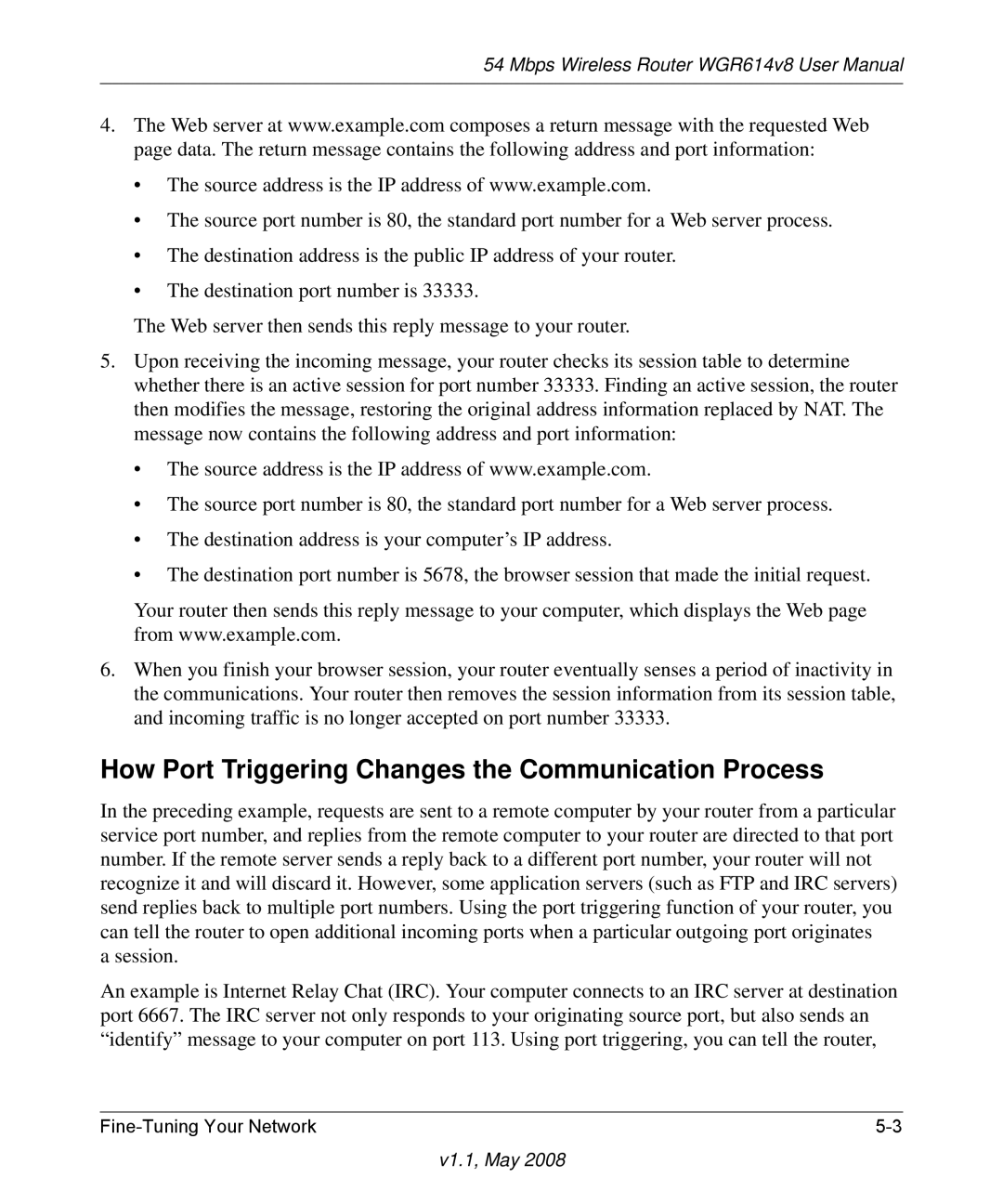
54 Mbps Wireless Router WGR614v8 User Manual
4.The Web server at www.example.com composes a return message with the requested Web page data. The return message contains the following address and port information:
•The source address is the IP address of www.example.com.
•The source port number is 80, the standard port number for a Web server process.
•The destination address is the public IP address of your router.
•The destination port number is 33333.
The Web server then sends this reply message to your router.
5.Upon receiving the incoming message, your router checks its session table to determine whether there is an active session for port number 33333. Finding an active session, the router then modifies the message, restoring the original address information replaced by NAT. The message now contains the following address and port information:
•The source address is the IP address of www.example.com.
•The source port number is 80, the standard port number for a Web server process.
•The destination address is your computer’s IP address.
•The destination port number is 5678, the browser session that made the initial request.
Your router then sends this reply message to your computer, which displays the Web page from www.example.com.
6.When you finish your browser session, your router eventually senses a period of inactivity in the communications. Your router then removes the session information from its session table, and incoming traffic is no longer accepted on port number 33333.
How Port Triggering Changes the Communication Process
In the preceding example, requests are sent to a remote computer by your router from a particular service port number, and replies from the remote computer to your router are directed to that port number. If the remote server sends a reply back to a different port number, your router will not recognize it and will discard it. However, some application servers (such as FTP and IRC servers) send replies back to multiple port numbers. Using the port triggering function of your router, you can tell the router to open additional incoming ports when a particular outgoing port originates
a session.
An example is Internet Relay Chat (IRC). Your computer connects to an IRC server at destination port 6667. The IRC server not only responds to your originating source port, but also sends an “identify” message to your computer on port 113. Using port triggering, you can tell the router,
|
